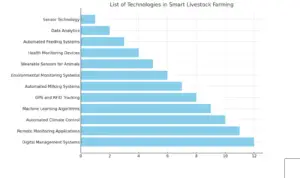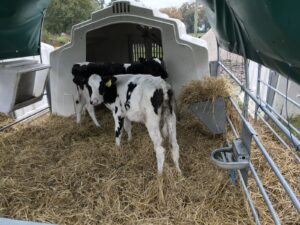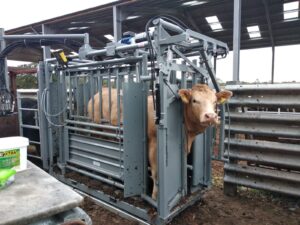There are many reasons why crop rotation is important and an essential practice for sustainable agriculture, as it helps to maintain soil health and fertility, controls pests and diseases, and improves crop yields.
By planting different crops each season with specific harvest cycles, the farmer can ensure single crop does not exhaust the nutrients in a particular area of land too quickly.
Crop rotation is economically advantageous for farmers who want to maximize their long-term output and improve the farm ecosystem’s overall health.
Crop rotation is a key practice for organic farming that needs to accomplish farm sustainability without synthetic chemicals to protect crops from parasites and increase soil health.
The Definition Of Crop Rotation
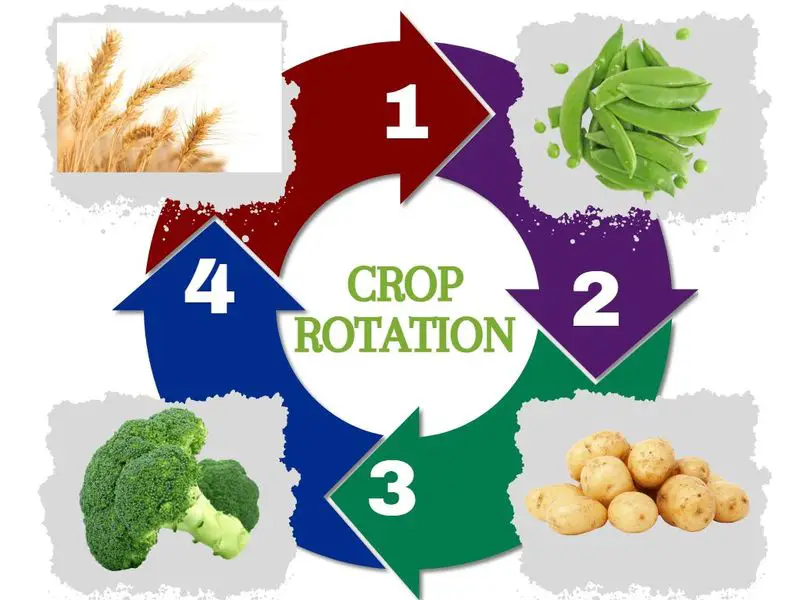
Crop rotation is a farming practice that involves changing the type of crop planted in a specific area yearly. In traditional crop rotation, fields are divided into three or four sections which are planted with various crops on a rotating basis.
The most common form of crop rotation consists of alternating between planting cereal grains such as wheat or oats, legumes such as peas or beans, and root vegetables like potatoes and carrots.
Crop Rotations Systems: 5 Sequences and Strategies
There are different crop rotation systems, each with specific sequences and strategies. Some common types include:
1. Three-field rotation: One-third of the land is planted with a cereal crop (such as wheat or barley), one-third with a legume crop (such as peas or beans), and one-third is left fallow (unplanted) to rest and recover. This rotation helps to improve soil fertility by alternating between crops that fix nitrogen and those that use it.
2. Four-field rotation: This system adds a fourth field to the three-field rotation, which is planted with a root crop (such as potatoes or turnips) that does not compete with the cereal and legume crops for soil nutrients.
3. Five- or six-field rotation: This system includes additional fields to the four-field rotation and includes other crops such as grass or oilseed crops.
4. Two-field system: This agricultural production method is the oldest and has been used for centuries to maintain soil fertility and quality. This rotation practice involves alternating one field planted with a crop while the second field is left fallow.
5. Intercropping: This system involves simultaneously planting two or more crops in the same field. It requires more management and can be complex. The planted crops must be compatible with each other’s growth requirements and differ enough to minimize competition while maximizing productivity. Additionally, carefully selecting companion plants is essential for creating an ideal balance between nutrients, light, and water availability.
How to Select the Ones yor Your Crop Rotation - Vegetable Families:
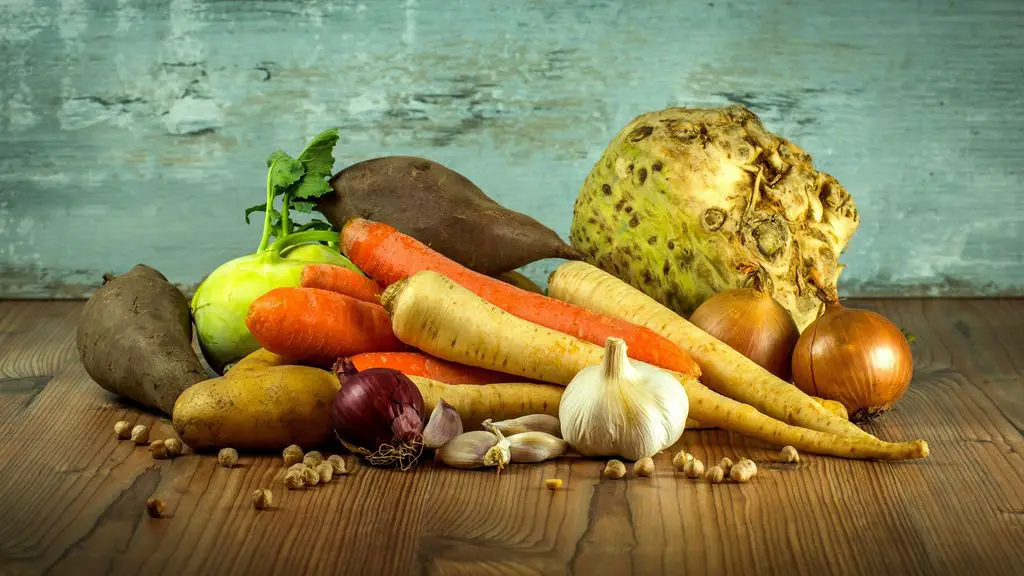
Choosing the type of plant and culture to use in a crop rotation system is a complex exercise. The best way is to look at plant families, the different nutrients requirement, what benefits they can provide to the soil, and the level of profitability that a specific crop can achieve.
There are many different plant families of vegetable crops, each with unique characteristics and uses. Some common plant families of vegetable crops include:
- Brassicaceae: broccoli, cauliflower, and cabbage.
- Poaceae: Corn, rice, wheat
- Solanaceae: tomatoes, peppers, eggplants, and potatoes.
- Apiaceae: carrots, parsley, celery, and fennel.
- Cucurbitaceae: cucumbers, melons, squash, and pumpkins.
- Lamiaceae: includes basil, mint, and oregano crops.
- Fabaceae: peas, beans, and lentils.
- Alliaceae: onions, leeks, and garlic.
- Asteraceae: lettuce, endive, chicory, artichoke
- Amaranthaceae: amaranth and quinoa.
- Chenopodiaceae: spinach, beet greens, and Swiss chard.
This list is not exhaustive of all the single crops belonging to a family. Still, every culture belonging to one specific family has similar characteristics regarding nutrients and potential benefits to the land. A farmer can use these characteristics to achieve the best output from its crop rotation system.
How to Implement a Crop Rotation Strategy
When choosing the crops for your rotation, there are many aspects to consider. It can be overwhelming, so the advice is to start with a simple system.
- Determine the objective of your rotation
- Identify what you want to achieve
- Identify the needs of your lands
- Plan accordingly with your resources and the limitations of your farm
Objectives
- Soil fertility: Do you want to increase the fertility of your land? Your best bet is to plant legume crops such as peas or beans. They can be rotated with a cereal crop such as wheat or barley because legumes fix nitrogen in the soil, and cereal crops have high nitrogen requirements.
- Soil health: Farmers can use crop rotation If the objective is to improve soil health and soil structure, reduce erosion, and increase water infiltration.
- Pest and disease control: If you want to achieve a bigger resistance to diseases, then rotating a susceptible crop with a resistant crop can help.
- Increase yield: Choosing high-demand crops can help increase the farm’s revenue.
Considerations
- How are you planning to use the crop?: Are you feeding Livestock or selling for cash? Including different crops in your farming system can minimize the risks related to market fluctuations.
- The weather: The climate where the crops will be grown will also play a role in crop rotation. Crops well-suited to the local climate will be more likely to thrive and produce a good yield. Diversifying crop rotation by including various crops can reduce weather risks.
- Equipment and labor: The equipment and labor required for different crops will vary, so it’s essential to choose crops easily grown with the equipment and labor available on the farm.
The Importance of Testing the Soil
Testing the soil is critical in deciding how to structure your rotation system. It provides insight into nutrients in the soil, and it identifies potential mineral deficiency. By understanding the pH level, texture, and other soil characteristics, farmers can effectively adjust their rotation practice to suit their farm best and choose the right plants.
Soil testing will allow farmers to identify critical elements such as nitrogen, phosphorus, potassium, and pH balance.
How to Integrate Cover Crops
Cover crops are planted between main crop rotations or in fallow land. They are usually planted to add organic matter, to fix nitrogen, or to control pests and diseases. They can be annual, biennial, or perennial plants and include grasses, legumes, forbs, brassicas, and other species. They can be used for various purposes, such as forage, green manure, or cash crop. Cover crops can also be used to add biodiversity to the farm.
It’s important to note that integrating cover cropping can be a complex practice. It should be done in consultation with a professional or an agronomist, considering the local conditions and the specific goals of the field.
Integrating cover crops into crop rotation requires careful planning on where to plant and what time of the year, depending on the cover crop species and the main crop.
Cover crops need to be adequately managed to achieve the desired outcome. They can be removed by mowing, tilling, or using a herbicide. It should be terminated at the appropriate time to avoid competition with the main crop.
What Is Green Manure?
Green manure involves cultivating green plants, such as legumes, grasses, and other crops, to naturally rebuild depleted soils by adding essential nutrients, improving the soil’s health, providing additional organic matter, and improving water infiltration and drainage.
Green manure works through a process that involves growing the crop which is then harvested or plowed back into the soil.
Benefits Of Using A Crop Rotation And Mechanisms Of Action
1. Improves Soil Fertility
Crop rotation improves nitrogen use by allowing farmers to take advantage of the different nitrogen-fixing abilities of various crops. Nitrogen is an essential nutrient for plant growth but is not readily available in the soil. Some crops, such as legumes (e.g., soybeans, peas, and beans), can fix nitrogen from the atmosphere through a symbiotic relationship with nitrogen-fixing bacteria. Legumes can add nitrogen to the soil, making it available for other crops, such as corn or wheat, that can use the nitrogen fixed by the legume.
Another way crop rotation improves nitrogen use is by reducing nitrogen leaching. The soil becomes saturated with nitrogen when the same crop is grown year after year, leading to nitrogen leaching into groundwater. Rotating crops can reduce this nitrogen loss by allowing the ground to rest and recover between crop cycles.
2. Reduces Fertilizer Use
Consequently, managing the soil’s nitrogen not only helps with soil fertility but also reduces the need for synthetic nitrogen fertilizer.
3. Improves Soil Structure
Soil erosion occurs when wind or water erodes the topsoil layer, which is essential for plant growth. Crop rotation helps prevent this by providing protective ground cover and reducing runoff caused by rainfall or irrigation. Different crops have different root systems that help hold the soil together, preventing it from being washed away by rainwater or blown away by strong winds.
4. Reduces Parasites, Weeds, And Insect Pests
Crop rotation can reduce diseases and pests by breaking the life cycle of pathogens specific to certain plants. Pathogens such as bacteria, viruses, parasites, and fungi can survive in the soil or on plant debris and infect the next crop planted in the same field. By rotating different types of crops, farmers can disrupt the life cycle of the pathogens and reduce the amount of disease pressure on the crops.
Weeds reproduce by seed, sometimes producing many seeds that can survive in the ground for a long time. By rotating crops, farmers can disrupt the life cycle of weeds and reduce the amount of weed pressure on the crops. Some crops compete with weeds for light, water, and nutrients, making it harder for them to grow. Some crops have allelopathic properties, which means they produce chemicals that can inhibit the growth of weeds. Some crops can grow faster and shade out the weeds or have a deep taproot that can extract nutrients and water from deeper soil layers weeds cannot reach.
5. Increase Crop Yields
Recent studies have found that crop rotation can result in higher yields compared to monoculture farming. Restoring fertility, improving the structure of the soil, reducing pest pressure, and increasing microbial activity result in better soil health that increases plant growth and produces higher yields overall.
How Crop Rotation Helps the Environment
- Reducing pollution: Rotating crops reduces the need for pesticides and the need for chemical treatments that can potentially leach into the soil or water. Crop rotation can also decrease the use of synthetic fertilizers by improving soil health.
- Promoting biodiversity: Crop rotation can promote biodiversity by providing habitats for beneficial insects, birds, and other animals, which can naturally help control pests and diseases. Additionally, reducing the need for chemical treatments can improve the ecosystem’s overall health.
- Helps with water conservation: A healthy soil can retain more water and reduce the amount of runoff and erosion; it can act as a sponge, holding more water in the root zone and reducing the need for irrigation. Crop rotation can also help reduce water loss through evapotranspiration by planting crops with different growth habits and water requirements according to the area’s climate. For example, if a farmer plants a field with a crop that has a deep taproot one year, then plants it with a crop that has a shallow root system the next, the second crop will use less water from the soil, allowing the ground to recover. Using cover cropping can also help to reduce water loss by shading the soil, reducing evaporation, and trapping snow and rain.
- Act as a sink for carbon: An healthy soil with a healthy amount of organic matter and microbes can reduce greenhouse gas emissions. Soil is an integral part of the global carbon cycle and is critical in regulating atmospheric carbon dioxide concentrations. Soil acts as a natural carbon sink, taking up and storing large quantities of carbon from the atmosphere and releasing it back into the air in a process called respiration. The capacity for soil to act as a natural carbon sink is linked to its organic matter content; organic matter is a crucial component in soil structure that provides food and energy sources for organisms living within it.
It’s important to note that crop rotation alone is not sufficient to reduce pollution, conserve water, and promote a healthy environment. It should be used with other sustainable agricultural practices such as reduced tillage, cover cropping, integrated pest management, mulching, and appropriate irrigation management.
Disadvantages of Crop Rotation
Crop rotation has many advantages, but it also has some disadvantages:
- Crop specialization: Crop rotation can be challenging to implement if a farmer specializes in growing a single crop.
- Weather conditions: Crop rotation can be affected by weather conditions.
- Mechanical limitations: Crop rotation can be difficult to implement if a farmer does not have the necessary equipment or resources.
- Pest and disease: Crop rotation can be ineffective if pests and diseases are resistant. Some pathogens can survive in the ground for long periods and infect new crops.
- Cost: Implementing crop rotation can be costly, requiring farmers to purchase different seeds and additional equipment. Additionally, it may take time to see the benefits of crop rotation in terms of increased yields and improved soil health, which can make it difficult for farmers to see a return on investment in the short term.
- Labor-intensive: Crop rotation can be labor-intensive, as it requires farmers to plant, manage, and harvest different types of crops throughout the growing season.
Why Crop Rotation Is Important: Conclusions
Despite these disadvantages, crop rotation can be an effective tool for the agriculture system when used in conjunction with other techniques such as nutrient management, pest control, and soil testing. Some of these disadvantages can be mitigated by integrating crop rotation with other sustainable agricultural practices and choosing the suitable crop rotation scheme for the specific location and climate.
Crop rotation is a complex strategy requiring awareness, knowledge, and consulting with an expert agronomist to develop the best action plan. Unfortunately, in the case of this agricultural system, one size does not fit all, and it is crucial to understand the soil status and implement a strategy suitable to the region’s climate and farm characteristics and goals.

